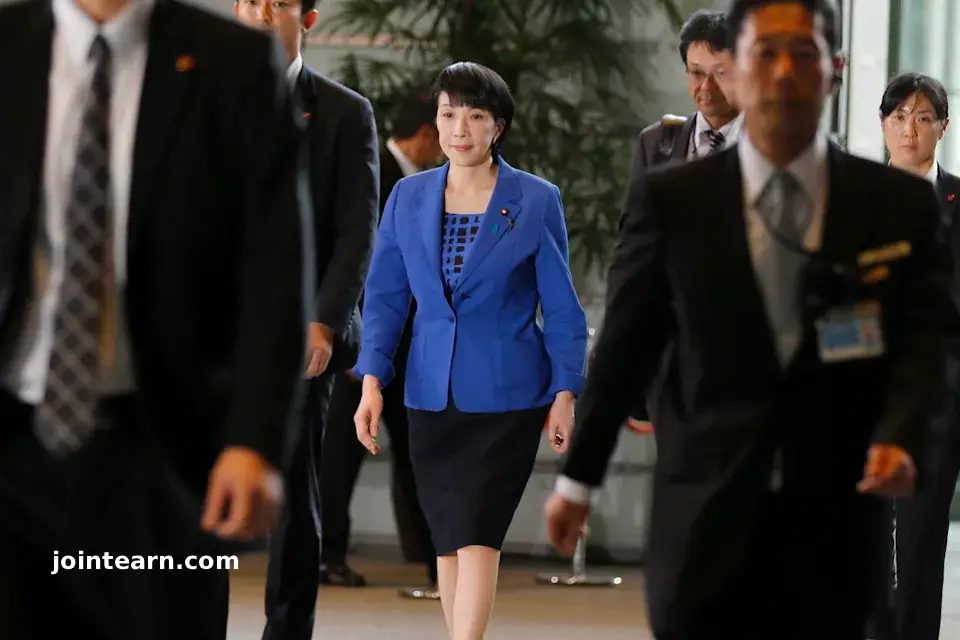
Tokyo, Japan — With the election of Sanae Takaichi as Japan’s first female prime minister, investors and citizens alike are evaluating the potential economic impact of her ultraconservative, market-friendly policies—dubbed “Sanaenomics.” Takaichi, 64, won a narrow victory in parliament with 237 votes, edging past the required 233 and forming a coalition with the Japan Innovation Party (Ishin no Kai) after the LDP’s former moderate partner, Komeito, withdrew.
Market Reactions and Investor Sentiment
Japan’s stock market responded positively to Takaichi’s win, with the Nikkei 225 climbing 0.7% to 49,517.57, approaching the symbolic 50,000 mark. Investors are betting on her promises of hefty defense spending, low interest rates, and market-friendly economic measures, signaling confidence in her continuation of policies favoring growth and credit expansion.
Inflation, Wages, and Interest Rates
Takaichi has identified consumer prices and wages as top priorities. Inflation recently surpassed the Bank of Japan’s 2% target, reaching 2.5%–3%, while wages have only recently climbed past 1997 levels. Takaichi opposes interest rate hikes, signaling a continuation of cheap credit, which boosts share prices but may hinder efforts to curb inflation and strengthen the Japanese yen.
She has pledged to raise wages, but details remain unclear, leaving uncertainty about how her administration will balance corporate incentives, labor policies, and rising consumer costs.
Addressing Japan’s Demographic Challenges
Japan faces a shrinking and rapidly aging population, creating labor shortages and threatening long-term economic growth. While Takaichi is conservative on social issues, she supports tax incentives for companies that provide childcare and potential family-focused tax benefits. However, structural barriers, including a corporate culture hostile to work-life balance, remain significant obstacles.
Following Abe’s Legacy: “Abenomics” 2.0
Takaichi is widely expected to follow the economic path set by her late mentor, Shinzo Abe, emphasizing stimulus, government spending, and targeted cash handouts despite Japan’s national debt nearing 300% of GDP. She is hawkish on defense, prompting investor interest in military-linked firms such as Mitsubishi Heavy Industries, Yaskawa Electric, and Japan Steel Works.
Her approach also emphasizes strengthening Japan’s alliance with the United States. Although she initially questioned Japan’s $550 billion commitment to a trade-related deal with the U.S., she confirmed her government will honor the arrangement, balancing international expectations with domestic concerns.
Political Constraints and Legislative Challenges
Despite her parliamentary victory, Takaichi’s coalition lacks a full majority, requiring cooperation from a fragmented opposition spanning the far-left Japan Communist Party to far-right groups like Sanseito. Navigating this fractured political landscape will be crucial for passing economic reforms.
Analysts warn that while “Sanaenomics” may generate short-term market optimism, entrenched political interests, factional disputes, and Japan’s historically short prime ministerial tenures could limit the scope and durability of her economic policies.
Outlook: Optimism Tempered by Structural Challenges
Takaichi’s premiership is poised to continue conservative economic stimulus policies, maintain low interest rates, and expand defense spending, potentially boosting market confidence and corporate investment. However, long-term structural challenges—aging demographics, wage stagnation, and political factionalism—remain significant hurdles.
Japan’s economy under its first female prime minister will be closely watched, as Sanaenomics tests whether bold fiscal and monetary strategies can revive growth in one of the world’s largest and most complex economies.
Leave a Reply